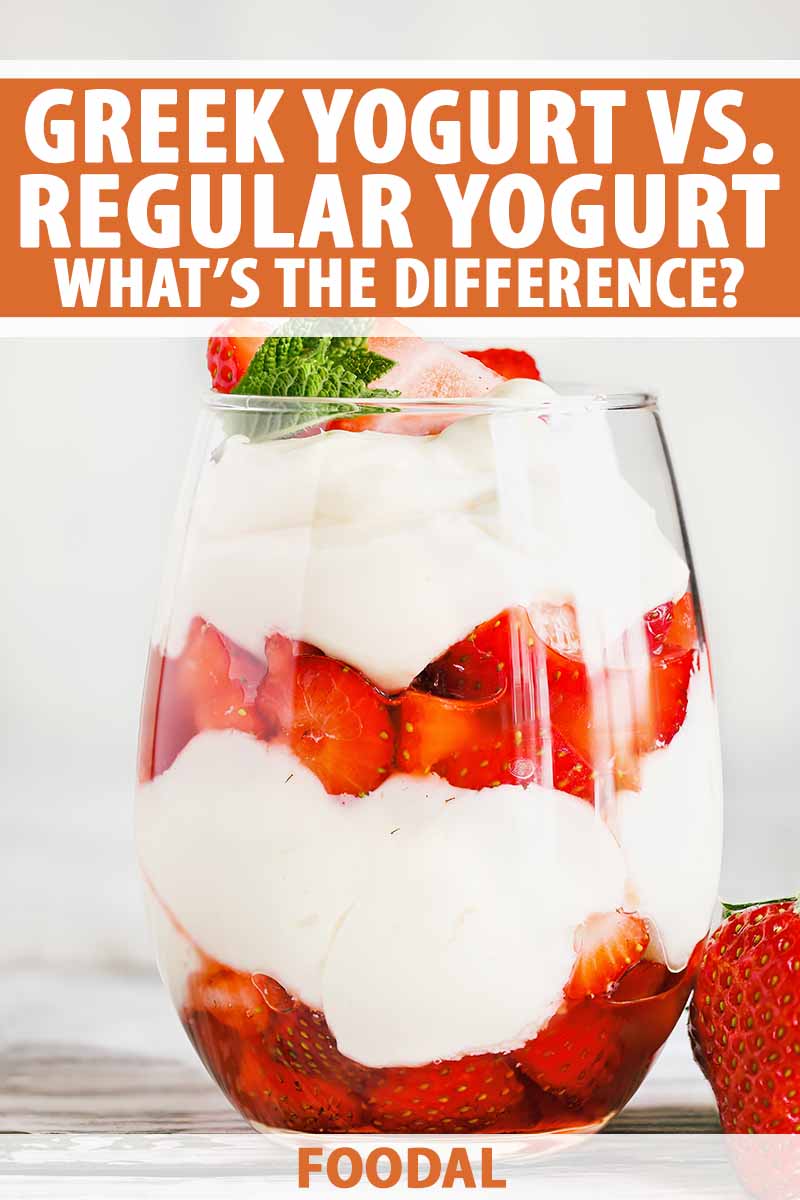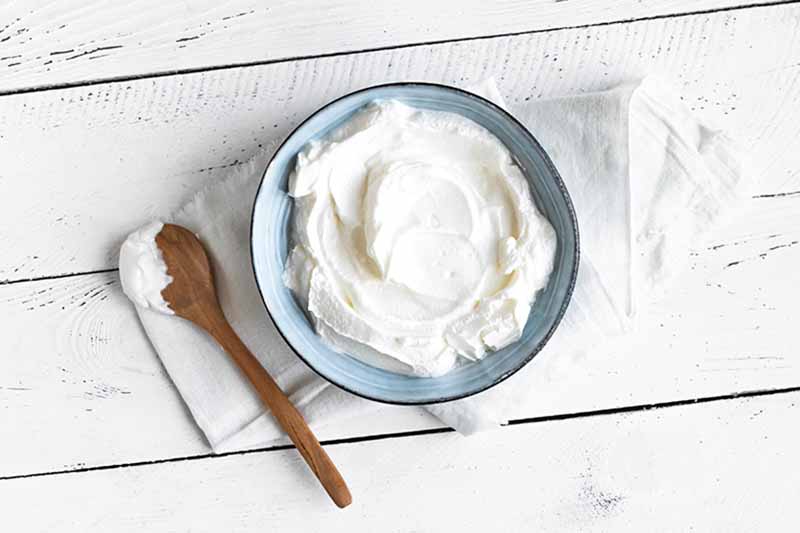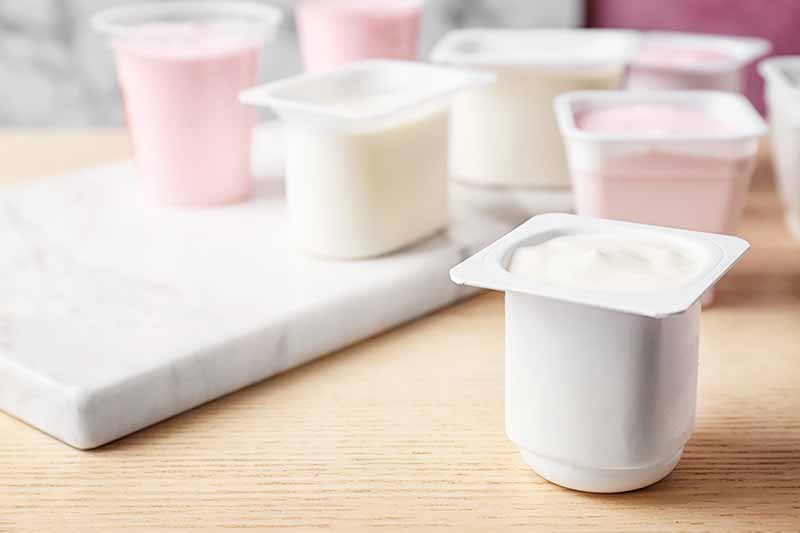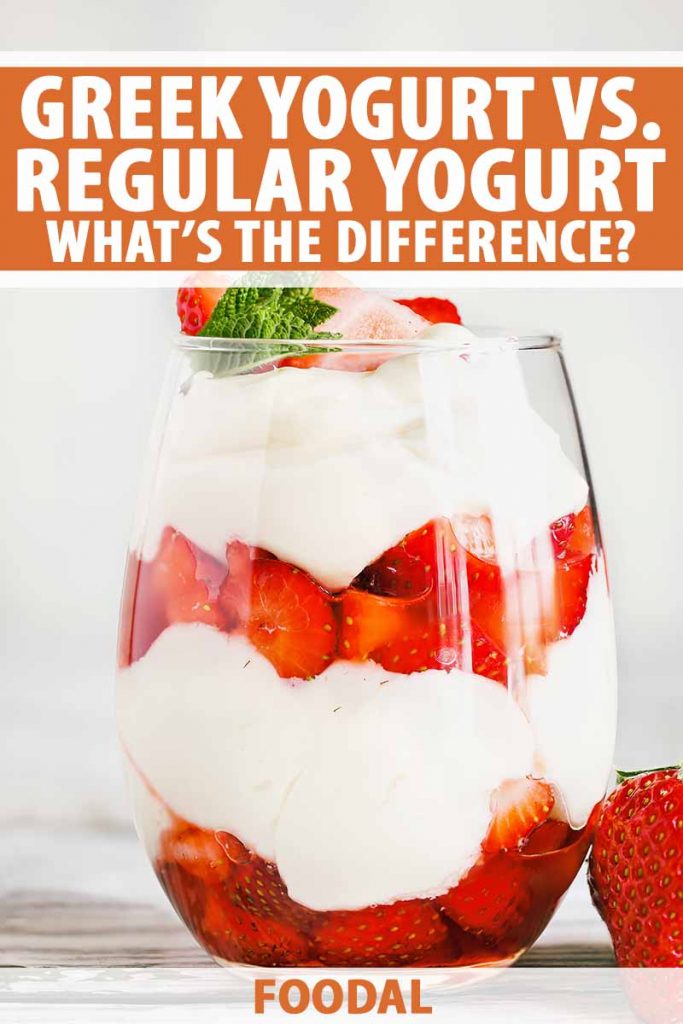What’s your yogurt preference?

Do you go for smooth and delicate regular yogurt, or do you like the thick and dense consistency of Greek varieties?
They have so much in common, but have you ever stopped to think of what exactly the differences are between the two?
I’m not saying to come to a complete halt right in the middle of the grocery store on a busy and packed Saturday shopping trip, but just in general… have you thought about it?
Move on if you’re fine picking up any random cup, tub, or variety pack at the store without any second guesses – but if you want to know more, this article is for you, my curious dairy devourers.
I will explain the similarities and differences between these two fermented foods, providing you with both informational insight and intriguing drama.
Your cute little fruit-on-the-bottom cups have actually caused quite a big spectacle!
Greek vs. Regular Yogurt: What’s the Difference?
A Similar Start(er)
Both regular and Greek yogurt are created with the same base ingredients:

Dairy milk – which could be cream, full-fat milk, partially skimmed milk, or skimmed milk – lactic acid-producing bacteria, and optional thickeners, emulsifiers, or flavoring ingredients.
The initial production method is also the same:
Throughout the carefully monitored process of heat-treating milk and adding food-safe active starter cultures, the milk ferments, acidifies, and thickens to eventually transform into a creamy, tangy yogurt product.
For a more in-depth look into the history of this rich fermented food and how it differs specifically from kefir, another fermented milk product, you can read our article on kefir versus yogurt.
Both regular and Greek styles are available in a variety of formats at grocery stores. Among these two products you’ll see a range of flavors, milkfat contents, and container sizes.
None of these specific retail characteristics define the key differences between regular and Greek types – whether or not there is a sweet and jam-like fruit layer on the bottom of your cup doesn’t matter if you’re trying to determine the true differences between the two styles!
Keep reading to discover what really separates one from the other…
It’s All in the Thickness
The biggest difference between the two varieties is that the Greek styles undergo further manufacturing processes to create products that are generally thicker, denser, and tangier, with a higher protein content.

Greek yogurt, also known as concentrated or strained yogurt, is typically yogurt that has been drained to remove some of its water content and water-soluble components.
Historically, throughout the multi-millennial history of fermented dairy production and consumption, the straining process has simply been done in fine-mesh cloth bags or cheese cloth. This method has since evolved into more modern manufacturing methods such as mechanical centrifugation and ultrafiltration.
Centrifugation separates components with different densities, and ultrafiltration is a pressure-driven process that separately filters liquids and solids across a semipermeable membrane.
With any of these straining processes, proteins, fats, and other solids are retained while controlled levels of water and water-soluble molecules, like lactose, are released.
These varieties can also be thickened with the addition of thickening agents, emulsifiers, and stabilizers to create a more viscous texture, such as supplementary dairy protein concentrates or gel-forming hydrocolloids.
A Strained Situation
Even though the FDA’s Code of Federal Regulation enforces a strict standard of identity for general yogurt requirements in the United States, there is currently no standard of identity specifically for Greek yogurt.

With this in mind, the thickening process is not heavily regulated between mechanical straining or the addition of stabilizers, and you may find the terms “fortified” or “Greek-style” on product labels, depending on the brand and the ingredients used.
These generalities and others used in the production of the Greek type in particular have led to multiple lawsuits against major yogurt-producing companies.
Two separate class-action lawsuits were filed against General Mills and Cabot in 2012 for deceptively marketing their products due to the use of whey protein and milk protein concentrates. These lawsuits were both eventually dismissed, as the FDA does approve of using food-safe flavoring ingredients, color additives, stabilizers, and emulsifiers in the production of yogurt.
And both Fage and Chobani were sued in 2014, with similar claims that the term “Greek yogurt” is misleading to consumers, since their products are not actually made in Greece – both companies own production facilities across the United States as well as in other countries. These lawsuits were also eventually dropped.
There have even been legal issues between the companies themselves!
Fage, which was originally founded in 1926 in Athens, Greece, successfully sued US-founded Chobani in a British court in 2014 for Chobani’s use of the term “Greek yogurt” specifically in its UK branding. According to the UK ruling, Chobani can no longer label any of its UK products as “Greek,” since the company’s products are made in the United States and Australia.
And let’s not leave out when the ex-wife of Chobani’s CEO and founder filed a lawsuit accusing him of bribing and stealing Fage’s recipe formula! What a sour scandal!
The drama is so thick, you could call it “Greek yogurt.” But even that might start a legal battle…
Greece Is the Word
Despite all of the threats, failures, and successes of multiple lawsuits, the use of the term “Greek” when labeling yogurt is still not dependent on the location of the food’s production, at least when it comes to manufacturing and selling it in the United States.

Because there are no legal standards in the US for the term “Greek yogurt,” this style does not need to be manufactured specifically in Greece.
The identification of Greek yogurt for retail products is most likely attributed to Greece’s popular dense yogurt product called straggisto, which translates in English to “strained yogurt.”
Nutritional Differences
Greek yogurt is generally slightly higher in protein and lower in sugar than regular varieties, due to the straining process, with a few other subtle differences in nutritional content between the two.

Milkfat content will vary between the two styles, as grocery stores will typically carry a range of milkfat percentages for both Greek and regular retail products.
Per the USDA, a 100-gram serving of plain whole milk yogurt contains:
- Protein – 3.82 grams
- Total lipids (fat) – 4.48 grams
- Total sugar – 4.09 grams
- Calcium – 127 milligrams
And, per the USDA, a 100-gram serving of plain whole milk Greek yogurt contains:
- Protein – 8.78 grams
- Total lipids (fat) – 4.39 grams
- Total sugar – 3.25 grams
- Calcium – 111 milligrams
The next time you go shopping, take a look at the items in the dairy section of your local store. You will immediately see the whole gamut of available products, all differing in fat content percentages and added flavors for both varieties, which will affect the nutritional contents.
If you are watching your sugar, either plain regular or Greek will be a far healthier option compared to flavored varieties. Flavored options generally have added sugars, while plain varieties will not.
Even vanilla-flavored options across both styles may contain additional sugars.
With that said, the main piece of advice I can give to you is to read the ingredient labels very carefully if you are monitoring your daily nutritional intake.
And if you want more protein power, go for Greek!
Cooking Applications
There are certain recipes where the dense consistency of Greek yogurt is preferred over the more delicate, wetter texture of regular yogurt.

Both plain regular and Greek options pack a tangy punch. But because of its more concentrated level of lactic acids in its solids, Greek will have a stronger acidic bite.
The solid structure and more powerful flavor of the Greek style will hold up beautifully when dolloped as a final garnish on savory dishes like chicken pitas or hearty soups and stews.
It’s also the ideal choice when building sweet parfaits, since it will create neat and clearly defined layers, and it will make the thickest and creamiest frozen dessert you will ever taste!
Regular yogurt’s loose texture can be more easily whisked and homogeneously incorporated into recipes that need a smooth batter or sauce.
Citrus cake with marmalade glaze is so light and tender with the addition of plain whole milk yogurt, and overnight oats are quick to mix together with it as well.
They can easily be substituted for one another, with a few smart changes – so don’t you worry if you only own one type when you actually need the other to make a certain recipe!
If a recipe calls for regular but you only have Greek, whisk in a teaspoon of water at a time in a bowl to reach a thinner consistency that is similar to regular. The addition of water can also mellow out the stronger acidic taste.
If a recipe calls for Greek but you only have regular, just a little more culinary intellect is demanded in this case.
Because regular styles contains more water, you will need to identify how you can minimize the liquid content elsewhere in your recipe.
For example, if you are using regular instead of Greek in a smoothie recipe, consider reducing the amount of milk or juice by about 1/8 cup per smoothie.
You can also try to strain it yourself at home! Place a few scoopfuls in a cheesecloth that is lining the inside of a fine mesh strainer over a large bowl. Cover the top with plastic wrap and allow this to sit in the refrigerator for 12 to 24 hours, depending on how much liquid you wish to expel. Gently press down with a spoon every few hours to release the liquid more quickly.
Buy a Variety for Home
With dozens upon dozens of options, you have your fair share of products to choose from when you are shopping at the store.

And I’m not opposed to buying multiple varieties for the week – actually, I do it all the time! And it might be something you should consider doing, too.
In my household, we always like to keep a stash of flavored fruit-on-the-bottom Greek cups at the ready for the perfect grab-and-go option when we need a quick breakfast to bring with us to work. We’re big fans of the variety packs, since we each have our own flavor preferences and can never agree on a favorite!
And we’ll always have a big tub of plain regular yogurt on hand to whizz up in smoothies, whisk into creamy soups, make smooth sauces, and bake batches of tender muffins.
What are your favorite ways to incorporate either option in different recipes? Do you prefer one over the other? Let’s talk soon – the comment section below is open!
More yogurt recipes, you ask? If you buy this tangy ingredient in bulk like I do, you’ll be glad to know that I have many more suggestions! Give your sweet and savory dishes a creamy boost you won’t soon forget with these delicious homemade recipes:
© Ask the Experts, LLC. ALL RIGHTS RESERVED. See our TOS for more details. Photo credit: Shutterstock.
About Nikki Cervone
Nikki Cervone is an ACS Certified Cheese Professional and cheesemonger living in Pittsburgh. Nikki holds an AAS in baking/pastry from Westmoreland County Community College, a BA in Communications from Duquesne University, and an MLA in Gastronomy from Boston University. When she's not nibbling on her favorite cheeses or testing a batch of cupcakes, Nikki enjoys a healthy dose of yoga, wine, hiking, singing in the shower, and chocolate. Lots of chocolate.




